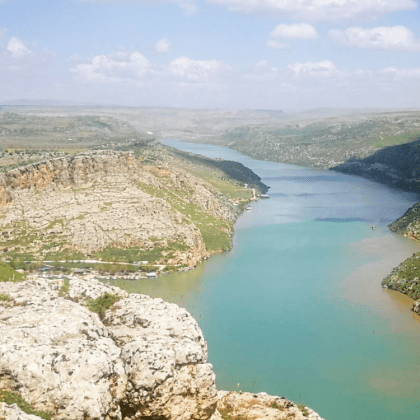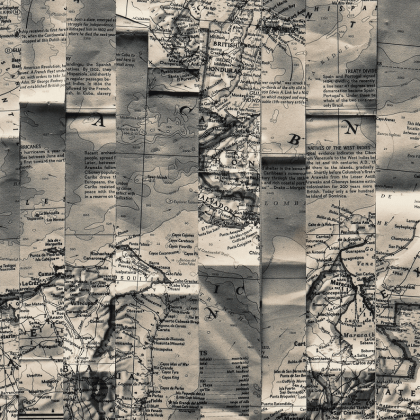History meets fiction in Doctor Who, ‘The Fires of Pompeii’
Back in spring 2008 the new Doctor Who was entering its fourth season. David Tennant was the Doctor, Catherine Tate was his companion Donna, and Pompeii was the destination of their first journey through time together. Their arrival was not a great help to the majority of the town’s inhabitants, who met their pre-destined end on ‘Volcano Day’. However, for me, teaching a new course on ‘Living in Ancient Rome’, it was extremely fortunate. Our final class would examine representations of the Roman world today. That episode, ‘The Fires of Pompeii’, would make an excellent case study. Little did I realize as I sat down to watch that it would come to dominate my research for the next year and open my eyes to a whole new area of investigation: ancient history on television.
There is plenty to enjoy in ‘The Fires of Pompeii’: rock-formed lava monsters, the obligatory exploding volcano, and Peter Capaldi appearing in his first role in the show (as the father Caecilius; at time of writing he is the eagerly awaited next Doctor). What particularly caught my eye, as an ancient historian, was the way this Roman town, its house and its inhabitants seemed very familiar – as Donna says, ‘It’s so Roman’. I wanted to think more about this. How did the makers of the programme create a Rome that was recognizable, comfortable, and real – and why? By asking this question, I hoped to learn more about the ways that people today understand and conceptualize ancient Rome. This was the starting point for my research.
The results are published here in Greece & Rome, in the journal article ‘History meets fiction in Doctor Who, ‘The Fires of Pompeii’: A BBC reception of ancient Rome on screen and on line’. Without a doubt, this has been my most enjoyable piece of work so far. To answer my question I needed to rewatch more Doctor Who (oh no!), to read what the programme makers had to say, and to find out what other academics thought about the series as well as other related types of television, like sitcoms and documentaries. I also needed to think more fully about other depictions of ancient Rome to understand how the programme played with expectations we might have – perhaps from other television programmes and films, but also in this case the Cambridge Latin Course (which provided the characters for the Roman family). This took me well beyond my comfort zone, but as with the best of challenges it was also great fun.
The central issue to emerge from my research is encapsulated in the title, ‘History meets fiction’. To answer my original question, the programme’s Rome seems so familiar because it blends the ‘historical’ with the ‘fictional’. This might seem obvious: ‘The Fires of Pompeii’ tells a fictional story with its roots in ancient Roman society and historical events at Pompeii. But it is how the story is retold that makes it interesting. Rome looks and sounds like the city from Rome, a BBC historical drama. The Roman family bicker and quarrel like any sitcom family. And the action – in which the Doctor ultimately sacrifices the people of Pompeii to save the planet from malign aliens – is pure Who. Our ‘historical’ Rome is shaped by the structures and narratives of contemporary television. This is the source of its apparent reality. And yet, historicity remains vital to the drama. To really share the Doctor’s dilemma, the audience needs to relate emotionally to the inhabitants of Pompeii as real people; the real-life fate of thousands of dead Pompeiians nearly two millennia ago is vital to that. Rather than being two separate poles, ‘history’ and ‘fiction’ are thoroughly intertwined and work together to produce a dynamic Doctor Who episode.
This is a timely observation. Even today some historians get rather irate when television programmes do not ‘get it right’, by which they mean do not show the past as they conceive it. For them, fiction overpowers history. But this misunderstands the character of historical drama, especially when it blends together elements of comedy, science fiction and fantasy and draws the past into its own distinctive universe, like Doctor Who. Rather than complain, historians would do better to understand how and why a programme represents the past (as of course many already do). After all, it is through film and television that most people encounter ancient Rome, not through the classroom or scholarly books. These are widespread and legitimate forms of storytelling that should be understood rather than blindly criticized. And indeed, what are professional historians if not also story tellers? Writing history is as creative a process as making history on television. Becoming aware of how history is written in other contexts encourages us to reflect on how we shape the past for our audiences, and to rethink the supposed boundary between history and fiction.
Fiona Hobden (f.hobden@liv.ac.uk) is Senior Lecturer at the University of Liverpool in the department of Archaeology, Classics & Egyptology. She continues to work on the topic of ancient history on television, with special attention to documentary programmes. She is currently co-editing a book with Amanda Wrigley on Broadcasting Greece: Engagements with Ancient Greece on British Radio and Television, 1922-2022.
In conjunction with the Doctor Who 50th Anniversary, we are pleased to offer complimentary access to a selection of articles on Doctor Who and time travel, including Fiona Hobden’s article. Enjoy the selection free of charge here until 31st January 2014.







What a remarkably imaginative response to Dr Who! The great works of history have always combined literary craft with research and analysis. Why not, then, look for models in contemporary media of story telling? Dr Hobden has hit the nail on the head.